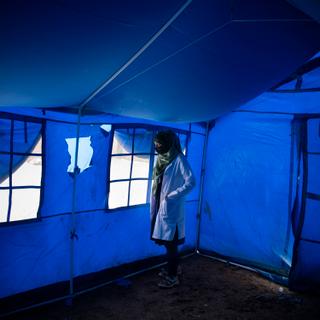


The risk to women's health in Afghanistan: 'The consequences of this segregation are catastrophic'
FeatureNew resistance fighters (2/2). In Afghanistan, only female healthcare professionals are allowed to treat women. Yet with their rights − including the right to study − being taken away, there are fewer and fewer women working in healthcare, putting half the country's population at risk.
On January 20, snow mixed with rain didn't discourage dozens of Afghans from all over the country from coming to the French hospital in Kabul. Many of them waited in the building of La Chaîne de l'Espoir, the international NGO that runs the establishment, which specializes in looking after women and children. Care is free, and the hospital is a reference for healthcare in the whole country. It's the only one to perform open-heart surgery and neonatal resuscitation. In the hallways, there are also agents from the Ministry for the Promotion of Virtue and the Prevention of Vice. They ensure the strict separation of men and women, among patients and staff alike, and the observance of Islamic law. At the main entrance, the management had to cover with a white tarpaulin a huge fresco showing a woman holding a child in her arms, after pressure from the ministry.
"The influx of patients is increasing, it's a tsunami," said Eric Cheysson, president of La Chaîne de l'Espoir and co-founder of health charity Médecins du Monde. "The International Red Cross is gradually withdrawing from the country. Doctors Without Borders [MSF] is referring more and more cases to us. The Taliban's anti-woman policy is draining the country of female health workers, and one medical center after another is closing."
That's true of this hospital too. Firstly, the brain drain: Eight of the nine resuscitators have left, and two Afghan surgeons decided to go work in the US. But above all, the lack of women: "Of the 280 women in our 960-strong workforce, 156 have left. It's a nightmare," said Cheysson, adding that Afghanistan is the victim of "social femicide".
You have 81.34% of this article left to read. The rest is for subscribers only.
